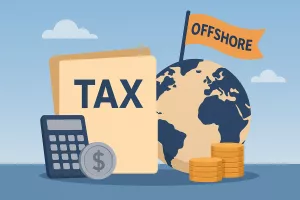Paying off debt can feel overwhelming, but two widely recognized strategies—the Debt Snowball and the Debt Avalanche—can help individuals regain financial control. While both methods focus on eliminating debt systematically, they differ in approach and effectiveness depending on personal financial goals and motivations. Understanding these methods can help determine which strategy best aligns with an individual’s financial situation. Choosing the right debt repayment method can make a significant difference in how quickly one becomes debt-free and how much interest is paid over time. For many, debt is a major source of stress, affecting financial well-being and long-term stability. Having a structured plan can bring clarity and control to managing personal finances. The Debt Snowball and Debt Avalanche methods each cater to different psychological and financial needs, making it essential to evaluate the pros and cons of each approach before committing to a strategy.
The Debt Snowball Method
The Debt Snowball Method prioritizes paying off debts from the smallest to the largest balance, regardless of interest rates. By tackling the smallest debt first, individuals experience a psychological boost that builds confidence and creates a sense of progress. This method is particularly beneficial for those who struggle with staying motivated or feel overwhelmed by the size of their total debt.
How It Works
- List all debts from smallest to largest balance.
- Make minimum payments on all debts except the smallest one.
- Allocate extra funds toward paying off the smallest debt first.
- Once the smallest debt is paid off, roll that payment amount into the next smallest debt.
- Repeat this process until all debts are eliminated.
Pros of the Debt Snowball Method
- Provides quick wins that boost motivation and confidence.
- Simplifies debt repayment by focusing on one balance at a time.
- Encourages behavioral changes that reinforce financial discipline.
- Helps reduce financial stress by eliminating individual debts more frequently.
- Suitable for individuals who need psychological reinforcement to stay committed to a debt repayment plan.
Cons of the Debt Snowball Method
- May result in higher overall interest payments if larger, high-interest debts take longer to pay off.
- Not the most cost-effective method in terms of interest savings.
- Requires discipline to continue making extra payments even after clearing smaller debts.
Practical Tips for Implementing the Debt Snowball Method
- Automate payments to avoid missing due dates and to ensure steady progress.
- Celebrate small victories by acknowledging each debt paid off with a small reward.
- Track progress visually by using a debt payoff chart or app to see the shrinking debt balances.
The Debt Avalanche Method
The Debt Avalanche Method prioritizes paying off debts with the highest interest rates first, minimizing the total amount of interest paid over time. By focusing on high-interest debts, individuals can save significant amounts of money that would otherwise go toward interest payments, allowing them to eliminate their financial burdens more efficiently.
How It Works
- List all debts from highest to lowest interest rate.
- Make minimum payments on all debts except the one with the highest interest rate.
- Allocate extra funds toward paying off the highest-interest debt first.
- Once the highest-interest debt is paid off, roll that payment amount into the next highest-interest debt.
- Repeat until all debts are eliminated.
Pros of the Debt Avalanche Method
- Saves money by reducing overall interest payments.
- More financially efficient in the long run compared to the Debt Snowball method.
- Helps pay off debts faster if extra payments are consistently made.
- Ideal for individuals focused on minimizing long-term costs rather than immediate psychological benefits.
- Leads to greater overall financial savings by preventing unnecessary interest accumulation.
Cons of the Debt Avalanche Method
- May take longer to see tangible progress, which could lead to frustration.
- Requires discipline and patience to stay committed, especially if high-interest debts have large balances.
- Does not provide the same motivational reinforcement as the Debt Snowball method.
- Can feel discouraging if large debts take a long time to pay off.
Practical Tips for Implementing the Debt Avalanche Method
- Use budgeting software to keep track of interest rates and prioritize payments effectively.
- Set reminders to review interest rates periodically, as they may change with variable-rate loans.
- Stay motivated by calculating potential interest savings and setting financial milestones.
Real-Life Examples and Case Studies
Case Study 1: The Debt Snowball Success
Imagine Sarah, a teacher with four credit cards and a student loan. She starts with a $500 balance on her smallest credit card and a $2,000 student loan as her largest debt. By using the Debt Snowball Method, Sarah pays off the smallest credit card in two months, providing her the psychological boost to tackle the next largest debt. Within two years, Sarah clears all her debts, having maintained her motivation with each small victory.
Case Study 2: The Debt Avalanche Advantage
Consider John, an engineer with a $5,000 credit card balance at 19% interest and a $10,000 car loan at 5% interest. By opting for the Debt Avalanche Method, John targets the high-interest credit card first. Within a year, he clears the credit card debt, saving hundreds in interest payments. John then applies his newly freed funds to the car loan, completing his debt repayment plan efficiently.
Common Mistakes and How to Avoid Them
- Neglecting to adapt strategies: Individuals often stick to one method without reassessing their financial situation. Regularly evaluate whether your current strategy is the most effective for your evolving circumstances.
- Overlooking budget constraints: Failing to create a realistic budget can lead to missed payments. Establish a budget that accommodates living expenses and allocates funds for debt repayment.
- Ignoring unexpected expenses: Life is unpredictable. Build an emergency fund to prevent setbacks in your debt repayment journey.
- Underestimating the importance of discipline: Consistency is key. Set automated payments and reminders to keep your momentum going.
Choosing the Right Method for You
The best method depends on an individual’s financial situation and psychological preferences:
- If motivation and quick wins are important, the Debt Snowball Method may be more effective.
- If minimizing interest and paying off debt efficiently is the priority, the Debt Avalanche Method is the better choice.
When to Consider a Hybrid Approach
For some, a hybrid approach—starting with the Snowball Method for motivation and then switching to the Avalanche Method to maximize savings—can be an effective compromise. This strategy combines the confidence-building effect of early debt eliminations with the financial efficiency of minimizing interest payments. Some individuals may also choose to focus on their highest-interest debt first and then transition into clearing smaller balances for an optimal mix of motivation and savings.
Additional Considerations
Other considerations include income stability, personal spending habits, and financial discipline. If cash flow varies month to month, flexibility in payment plans is key. Budgeting software and debt repayment calculators can assist in planning which method will yield the best financial results over time.
Psychological Factors in Debt Repayment
Understanding the psychological aspects of debt repayment can significantly impact success. The emotional satisfaction of seeing a zero balance can motivate continued efforts, making the Debt Snowball appealing. Meanwhile, the logical appeal of saving money through the Debt Avalanche can also be a powerful motivator for those who are more analytical.
- Debt Snowball: Great for those who need immediate reinforcement to stay engaged.
- Debt Avalanche: Suited for individuals who find motivation in long-term financial savings.
Tools and Resources for Success
- Debt Management Apps: Consider tools like You Need a Budget (YNAB) or Mint to track expenses and manage debt repayment strategies.
- Debt Calculators: Use online calculators to simulate different payment scenarios and visualize potential savings.
- Financial Advisors: Consult with a financial advisor for personalized advice tailored to your unique financial situation.
Final Thoughts on Debt Repayment Strategies
Both the Debt Snowball and Debt Avalanche methods provide structured ways to eliminate debt, and the best approach depends on personal financial goals and discipline. Choosing the right strategy and sticking to it consistently can lead to financial freedom and long-term stability. While the Debt Snowball method is more effective for individuals who need encouragement and motivation to stay on track, the Debt Avalanche method is better suited for those who want to maximize savings and minimize interest costs.
No matter which method is chosen, commitment and consistency are key. Ultimately, eliminating debt requires patience, financial awareness, and a willingness to make sacrifices to achieve lasting financial health. Taking control of debt repayment not only improves financial standing but also enhances overall well-being, reducing stress and paving the way for a more secure financial future. With the right plan in place, becoming debt-free is an achievable goal that can lead to greater financial freedom and peace of mind.




